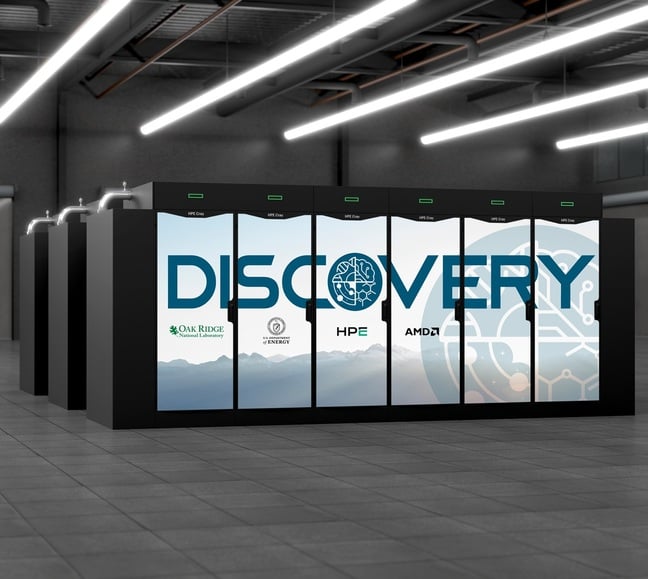HPE’s Discovery to succeed Frontier supercomputer with next-gen Cray tech
Summary
HPE will build Discovery, the successor to Oak Ridge National Laboratory’s Frontier exascale system, with delivery expected in 2028 and user operations beginning in 2029. The system is based on the next-generation Cray GX5000 architecture and will pair AMD ‘Venice’ server processors with Instinct MI430X GPUs. Storage will include Cray Storage Systems K3000 running the DAOS object storage platform alongside Lustre-based E2000, and the system will use HPE’s next-gen Slingshot interconnect. Oak Ridge will also get a separate Lux AI cluster in early 2026 to support training and inference workloads.
Key Points
- Discovery is budgeted at about $500m, expected for delivery in 2028 with operations from 2029.
- Built on HPE’s Cray GX5000 platform using AMD ‘Venice’ CPUs and Instinct MI430X GPUs (both due next year).
- Storage will feature Cray Storage Systems K3000 with DAOS and retain Cray E2000 (Lustre) for compatibility.
- Next-generation Slingshot high-performance networking will be used, though HPE has not disclosed a launch date.
- Lux is a separate, all-AMD AI cluster arriving in early 2026 using liquid-cooled ProLiant XD685 nodes, Epyc CPUs, MI355X GPUs and Pensando SmartNICs.
- GX5000 racks support up to 25 kW per compute slot and 40°C water liquid cooling to improve energy efficiency and meet European requirements.
- HPE claims the K3000 can deliver up to 75 million IOPS per storage rack, significantly outperforming many current systems on the IO500 list.
- HPE has not disclosed node counts, aggregate CPU/GPU totals, or total memory capacity for Discovery.
Why should I read this?
Short and blunt: this is where the next wave of exascale and big AI kit is heading. If you care about high-performance computing, research infrastructure or large-scale AI training, the cooling, power density and storage/network leaps here will affect costs, design and what workloads are feasible. Worth a quick read so you know what’s coming.
Author style
Punchy: HPE’s play with Discovery and Lux is a clear signal the vendor is pushing denser, liquid-cooled, AI-friendly exascale platforms. For research facilities and enterprises building large-scale compute, these are not minor tweaks — they change deployment, power and cooling planning. Read the detail if this affects your capacity planning or procurement roadmap.

